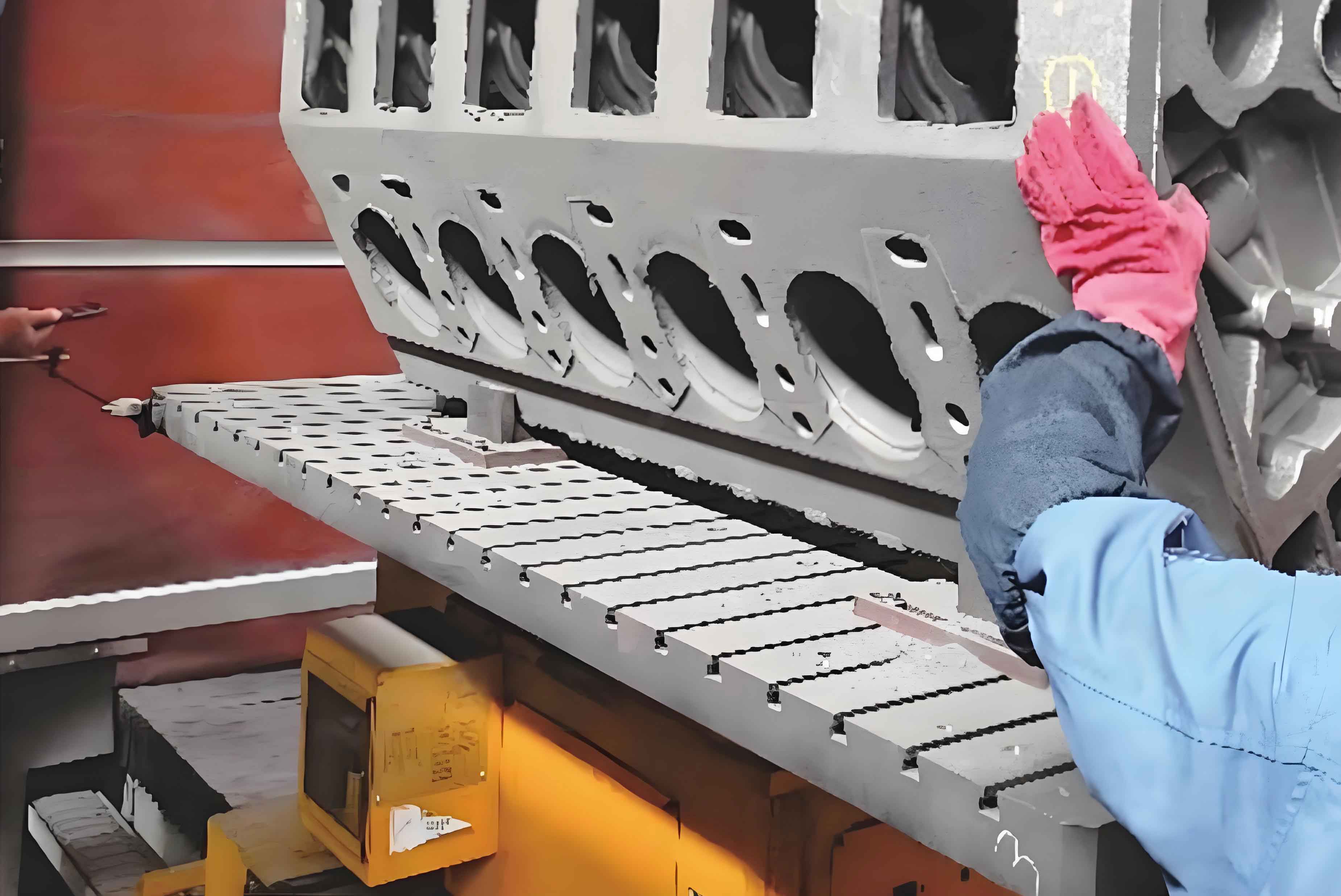The automotive industry’s rapid growth demands efficient production systems, particularly for critical components like the engine cylinder block. These blocks vary widely in geometry, mass, and surface features, posing challenges for automated handling. Traditional robot fixtures require frequent manual adjustments during product changeovers, leading to downtime and high maintenance costs. This paper presents a novel engine cylinder block handling robot fixture designed to address these challenges through modularity, hydraulic optimization, and intelligent positioning.

1. Design Background
The engine cylinder block is a cast iron component with thin walls and multiple internal cavities. Heavy-duty variants, such as those used in trucks, weigh up to 370 kg and exhibit complex geometries (Table 1). Existing fixtures lack adaptability, necessitating full clamp arm replacements during product switches. This process consumes 30 minutes per changeover, reducing productivity by 15–20%.
Table 1: Dimensions and Mass of Engine Cylinder Blocks
| Type | Length (mm) | Width (mm) | Height (mm) | Bore Diameter (mm) | Mass (kg) |
|---|---|---|---|---|---|
| A | 143 | 585 | 568 | 172 | 370 |
| B | 978 | 398 | 526 | 134 | 274 |
| C | 859 | 400 | 474 | 116 | 229 |
| D | 741 | 528 | 413 | 91 | 198 |
| E | 861 | 547 | 459 | 117 | 212 |
2. Fixture Architecture
The fixture comprises:
- Flange interface: Connects to the robot arm.
- Hydraulic cylinder assembly: Provides clamping force.
- Modular clamp arms: Interchangeable grip blocks for multi-model compatibility.
- Vision system: Identifies engine cylinder block features for precise alignment.
- Displacement sensors: Monitor clamp arm positioning.
A key innovation lies in the internal support mechanism (Figure 3 in original text), which stabilizes the engine cylinder block by expanding within its bore cavities. This design avoids surface damage while ensuring load-bearing capacity.
3. Clamp Arm Optimization
Traditional clamp arms required full replacements for different engine cylinder block types. The redesigned system uses swappable grip blocks secured by four bolts, reducing changeover time from 30 minutes to 10 minutes.
Table 2: Grip Block Compatibility
| Block Set | Upper Grip | Lower Grip | Compatible Engine Types |
|---|---|---|---|
| 1 | Type 1 | Type 1 | A |
| 2 | Type 1 | Type 2 | B, C, E |
| 3 | Type 2 | Type 2 | D |
Grip blocks are made of Cr12MoV steel (HRC 58–62 hardness) with surface grooves to enhance friction. Anti-drop hooks and limit pads ensure safety during hydraulic failures.
4. Hydraulic System Design
The hydraulic system powers clamp arm motion and ensures fail-safe operation. Key components include:
- Hydraulic cylinder: Selected based on the heaviest engine cylinder block (Type A, 370 kg).
- Proportional directional valve: Controls oil flow via programmable logic.
- Accumulator: Maintains pressure during power outages.
The cylinder diameter DD was calculated using:G=πD2Pη4G=4πD2Pη
Where:
- G=3700 NG=3700N (clamping force for Type A),
- P=10 MPaP=10MPa (system pressure),
- η=0.9η=0.9 (efficiency).
Solving for DD:D=4GπPη≈22.9 cm ⇒ Selected D=25 cm.D=πPη4G≈22.9cm⇒Selected D=25cm.
Table 3: Hydraulic System Parameters
| Component | Specification |
|---|---|
| Cylinder Diameter | 25 cm |
| System Pressure | 10 MPa |
| Oil Flow Rate | 20 L/min |
| Filtration Level | 10 µm (return line) |
5. Engine Cylinder Block Recognition
A vision system with In-Sight Explorer software identifies engine cylinder block types using predefined templates. The workflow includes:
- Coordinate calibration: Nine-point alignment between robot and camera.
- Feature extraction: Recognition of bore patterns and surface markers.
- Position adjustment: Clamp arms auto-adopt pre-programmed positions for insertion.
Displacement sensors validate clamp arm alignment within ±0.5 mm accuracy.
6. Performance Evaluation
Field tests in a foundry demonstrated:
- Changeover time: Reduced by 66% (30 min → 10 min).
- Labor: Reduced from 2 workers to 1.
- Cost savings: 40% lower maintenance expenses.
Table 4: Operational Metrics Before and After Optimization
| Metric | Before | After | Improvement |
|---|---|---|---|
| Changeover Time (min) | 30 | 10 | 66% |
| Labor (workers) | 2 | 1 | 50% |
| Maintenance Cost ($/year) | 12,000 | 7,200 | 40% |
7. Conclusion
This paper details a flexible robot fixture tailored for engine cylinder block handling. By integrating modular grip blocks, an adaptive hydraulic system, and machine vision, the design achieves:
- Multi-model compatibility: Supports 5+ engine cylinder block variants.
- Enhanced safety: Anti-drop mechanisms and hydraulic redundancy.
- Economic efficiency: Reduced downtime and labor costs.
Future work will explore AI-driven vision systems for real-time engine cylinder block defect detection during handling.
